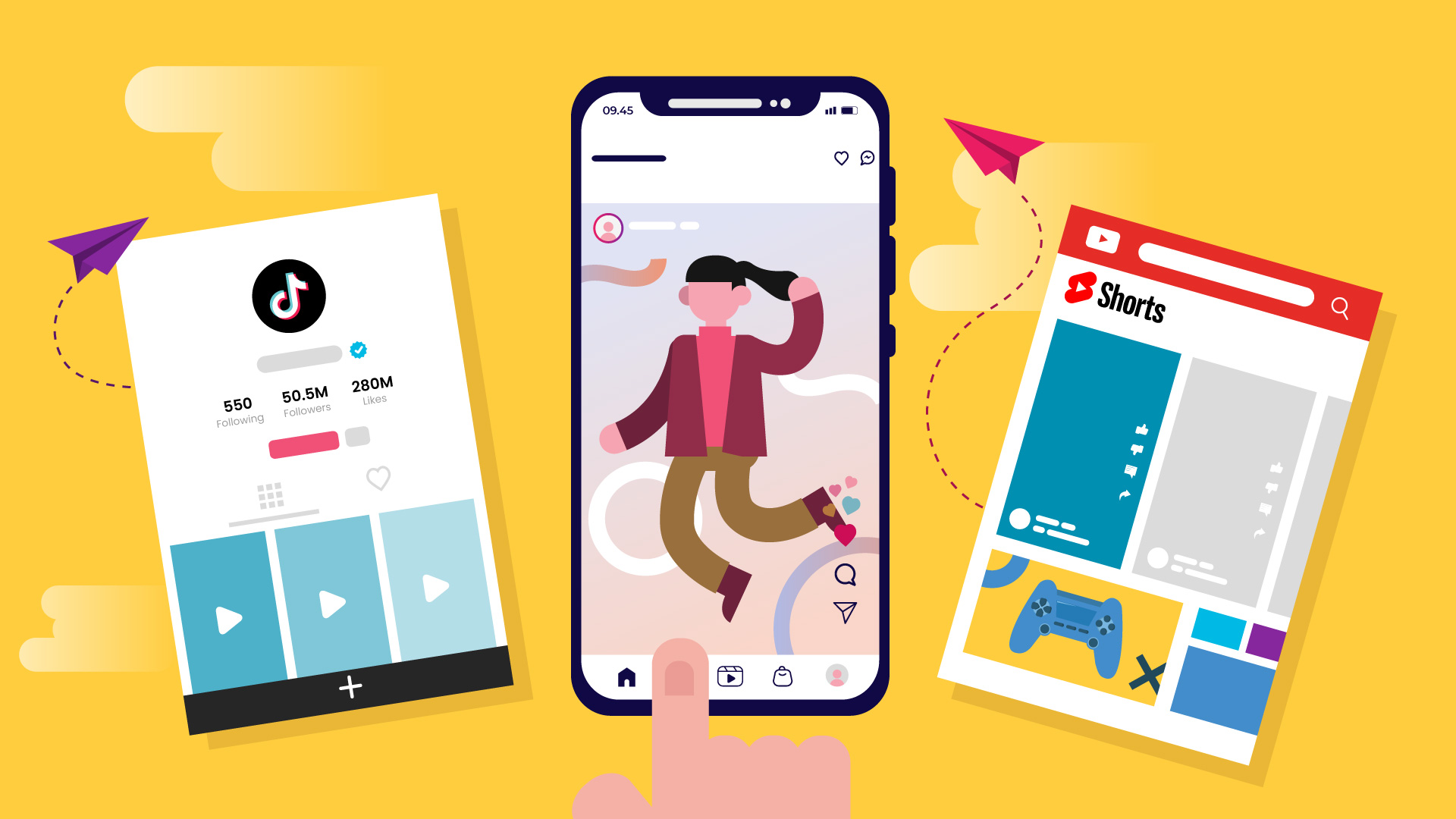When you think about marketing, what comes to mind? For many businesses, one of the most powerful tools today is video marketing. But before we get into the importance of video marketing, let’s talk about something equally important: video full form. Understanding what it stands for and how it plays a role in marketing strategies will help you get the most out of this engaging medium.
We’ll explore the video full form, how it’s used in marketing, and why video should be an essential part of your marketing strategy.
What Does “Video Full Form” Mean?
When you hear the term “video full form,” you might think: what exactly is it? The term itself generally refers to Video Marketing, which is a strategy that involves creating and using videos to promote a product, service, or brand. This can include explainer videos, tutorials, ads, or even social media videos.
The use of video in marketing has exploded over the last decade, becoming a powerful tool for businesses to communicate with their audience. Whether it’s an ad on YouTube, a brand story on Instagram, or a tutorial on Facebook, video full form refers to the overall use of video as a content marketing strategy.
Why Video Full Form Marketing is Crucial for Your Business

Video marketing is more than just a trendy way to engage with customers. It has proven to be a important element for businesses that want to boost engagement, build trust, and drive conversions. Here’s why video full form or video marketing matters for your business:
1. Increased Engagement
When it comes to catching a viewer’s attention, nothing beats video. People are more likely to stop scrolling when they see a video in their social media feed or email inbox. According to studies, video content generates significantly more engagement (likes, shares, and comments) compared to other types of content.
For instance, social media platforms like Instagram and Facebook show that video posts get more interactions than static images. This is why using video in your marketing campaigns is so important.
2. Better Retention and Understanding
One of the reasons video works so well is that it can convey information in a more engaging and easier-to-understand format. It’s far easier for people to grasp concepts when they see them in action. Whether it’s an explainer video or a customer testimonial, videos help your audience understand your product or service better.
Videos have been shown to increase retention by 95% compared to text-based content. This means that if you want your audience to remember your message, video is the way to go.
3. Stronger Brand Trust
Video marketing can help build trust with your audience. By using video to show your product, explain your services, or tell your brand story, you’re giving customers a face behind your business. This personal connection helps establish a deeper level of trust.
A study found that consumers are 64% more likely to buy a product after watching a video about it. This is because video allows you to showcase your product in action, and when customers can see how something works, it builds credibility and trust.
Boosts SEO and Rankings
Search engines like Google love video content. A well-optimized video can help your site rank higher in search results. By including keywords in your video’s title, description, and tags, as well as transcribing the video for search engines, you can boost your site’s SEO.
Types of Video Full Form Marketing Content to Use

There are several types of videos you can create for video marketing, depending on your goals. Here are some common video types that businesses use:
1. Explainer Video Full Form
Explainer videos are short, typically under two minutes, and explain a product, service, or concept in an engaging and simple way. These videos are perfect for explaining complex ideas in a visual format.
For example, if your product or service is new or complicated, an explainer video can break it down into easy-to-understand visuals and narration, making it more accessible for potential customers
2. Product Demos
A product demo video shows your product in action. It highlights the key features and benefits in a way that a static image or text simply can’t. These videos help customers visualize how your product works and how it can solve their problems.
3. Customer Testimonials
Let your customers do the talking for you. Testimonials provide social proof that your product or service is worth investing in. By featuring real customers, you humanize your brand and add authenticity, which helps potential customers trust your business.
4. Tutorials and How-Tos
Tutorials or how-to videos guide your audience through a process. Whether it’s showing them how to use your product or teaching them something related to your industry, how-to videos are incredibly valuable in helping customers understand your product and its benefits.
5. Live Videos
Live videos are an exciting way to connect with your audience in real-time. You can host Q&A sessions, share product launches, or simply show behind-the-scenes footage. Live videos make your brand feel more authentic, and they create a sense of urgency and exclusivity since people can only join the live broadcast at that specific time
How to Create Video Full Form Content That Works

Creating engaging video full form content is not just about hitting “record” and hoping for the best. It takes planning and strategy. Here are some actionable steps to help you create effective video content:
1. Define Your Goal
Before creating a video, define what you want to achieve. Do you want to increase brand awareness, drive traffic to your website, or convert visitors into customers? Having a clear goal will guide your video creation process and ensure your content aligns with your marketing objectives.
2. Know Your Audience
Understanding your audience is key to creating content they will engage with. What are their pain points? What type of content do they consume? By tailoring your video content to address your audience’s needs, you can increase its effectiveness.
3. Keep It Short and Sweet
Attention spans are shorter than ever, so keep your videos concise. Aim for videos that are around 1-3 minutes long. If it’s a more complex topic, consider breaking it up into shorter videos or a video series. Creating high-quality videos is easier than ever.
4. Use High-Quality Production
While you don’t need to create Hollywood-level videos, quality matters. Make sure your videos are well-lit, with clear audio and visuals. If you’re doing an on-camera video, make sure your background is clean and professional. Platforms like Animoto or Canva offer great tools to help you make professional-looking videos without needing expert skills.
5. Optimize for SEO
Just like your website content, video content needs to be optimized for search engines. Make sure to use relevant keywords in your video titles, descriptions, and tags.When you optimize your video content for search engines, don’t forget that local SEO plays a crucial role in ensuring your business is visible in local search results.
Video Full Form and Your Inbound Marketing Strategy

Now that you understand the power of videos and how to create compelling videos, let’s talk about how to use video marketing into your inbound strategy. Inbound marketing focuses on attracting potential customers through valuable content, and video plays a big role in this.
1. Attract Visitors With Video Full Form
The first step of inbound marketing is attracting visitors. You can use videos to draw people in, whether it’s through social media platforms, YouTube, or your website. Share teaser clips or short videos on social media to grab attention, and link back to longer videos on your site.
2. Convert Visitors into Leads
Once you’ve attracted visitors to your site, use videos to convert them into leads. Offer something valuable, like a product demo or an exclusive video, in exchange for their contact information. This helps build your email list and creates a way to nurture leads.
3. Delight Customers
After converting visitors into leads, continue to engage and delight them with helpful video content. Show them how to get the most out of your product, share customer success stories, or give them access to special offers. Videos are a great way to keep customers engaged long after they’ve made a purchase.
Conclusion:
As the world of marketing continues to evolve, video full form remains one of the most powerful tools you can use to connect with your audience. Whether you’re looking to increase brand awareness, boost conversions, or build trust, video can help you achieve your goals.
By understanding the different types of video content, creating high-quality videos, and using them into your inbound marketing strategy, you’ll be well on your way to success.








